
Today whilst sorting through my old 35mm film negatives, I found some photos of the damage our home suffered when we had a direct lightning strike to the aerials on our roof in September 2004.
In the night, we all went to bed as normal with a rainstorm heading our direction. Around 3 am we were all woken suddenly by the loudest noise I have ever heard and after trying to turn on the lights and realising that they didn’t work and smelling very strong smoke we all got out of the house as quickly as possible into the rain.
Looking at the roof where the television aerial and our ham radio antenna were installed, we found that the 2m tall 2m/70cm antenna was missing!

After finding a torch and going into all the rooms and in the loft, we had a lot of smoke but couldn’t find any fire or other source. We opened the windows to allow the smoke to escape and then checked the mains fuse box to see if any fuses had blown (we had old-style wire fuses) and we found that the metal case of the fuse box had come apart with a lot of burn damage and charring inside the enclosure.
The mains isolation switch had welded itself closed and we couldn’t isolate the power from the fuse box. The house had an old-style mechanical electric meter with no isolation switch, and we were not supposed to pull the master fuse without contacting the electric supplier.
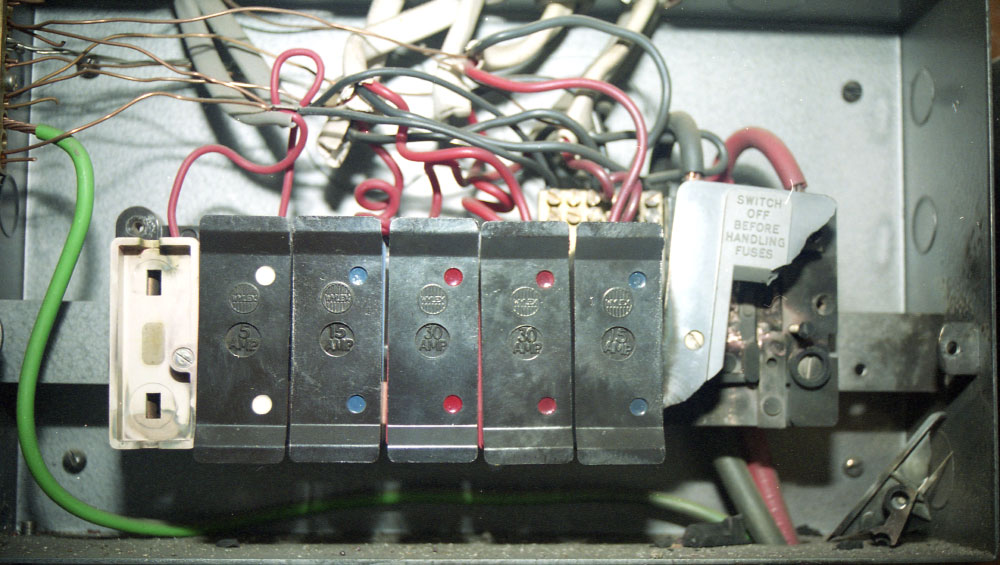
We tried to use the telephone to contact the electric supplier but found the line was dead. I checked the master telephone socket and found that it was no longer attached to the wall with a cable coming out of it but the cable had melted and the telephone socket was in several pieces over a meter from its original location with a lot of burn marks.
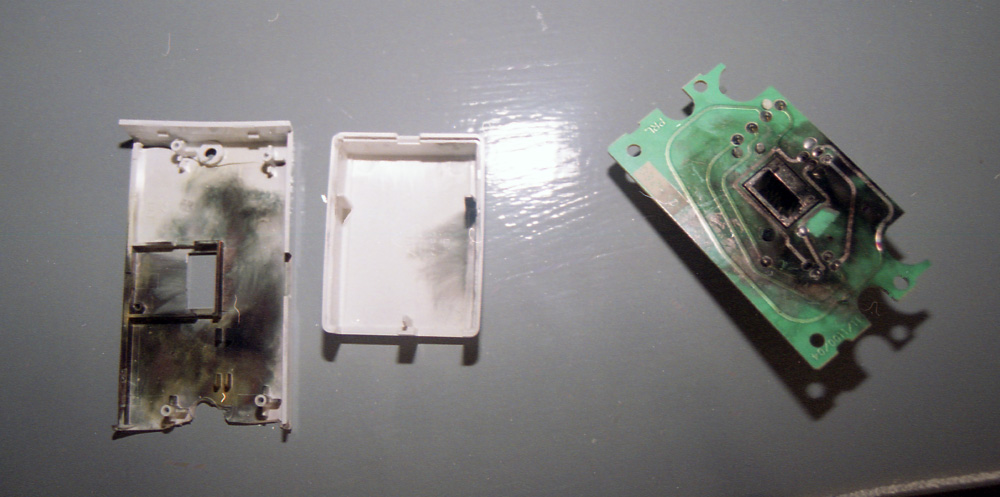
As we had no other way to disconnect the electricity supply and it was the middle of the night with other possible mains wiring damage we hadn’t yet discovered and potential fire risk, we took the decision to remove the master fuse and deal with any problems with the electric supplier later.
Once we were satisfied that the house wasn’t going to burn down, we went back to bed and in the morning, we started to find all the damage the lightning strike had caused.
The ham radio antenna was connected to an Icom PCR 1000 PC Controlled Wideband Receiver which was connected via USB to Andrews's new Shuttle PC computer.
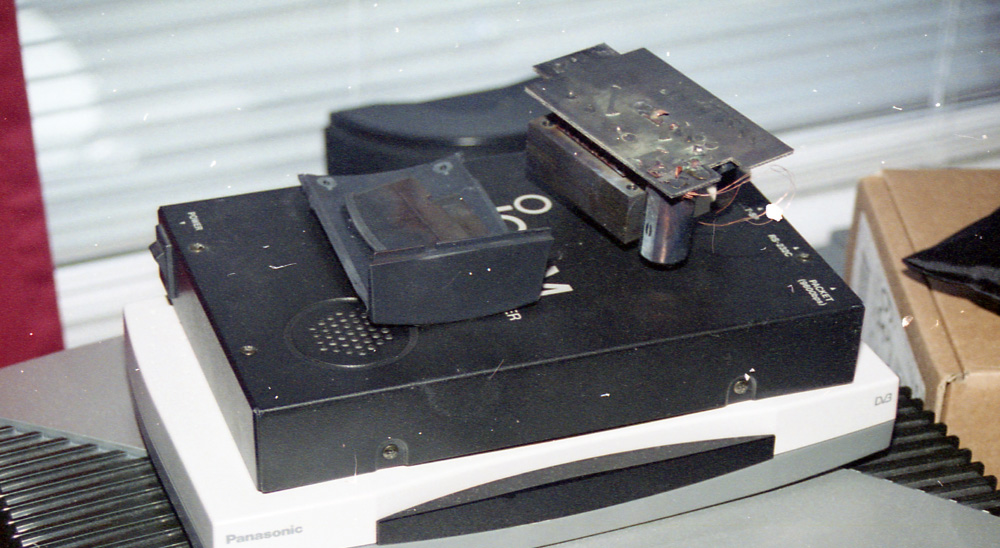
The computer was connected to the mains supply and to the network via a Netgear switch.
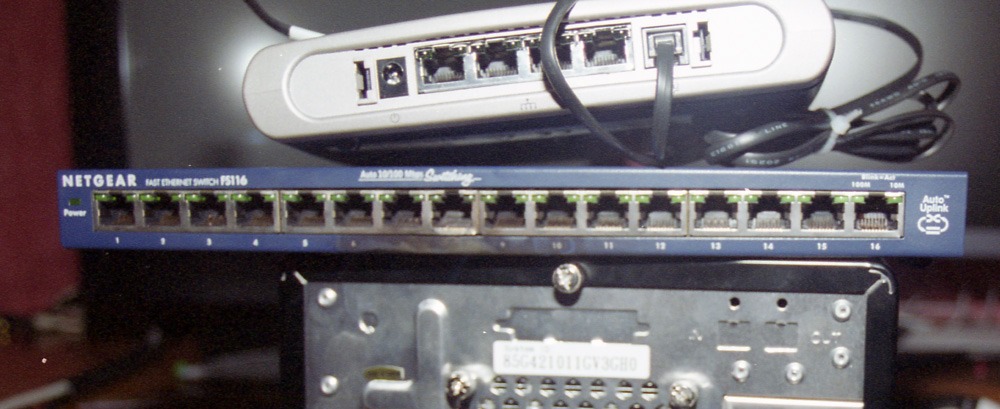
The energy from the lightning strike had hit the antenna, travelled down the coax into the Icom radio, into the computer and then across the entire network destroying all the connected computers on its way to the ground.
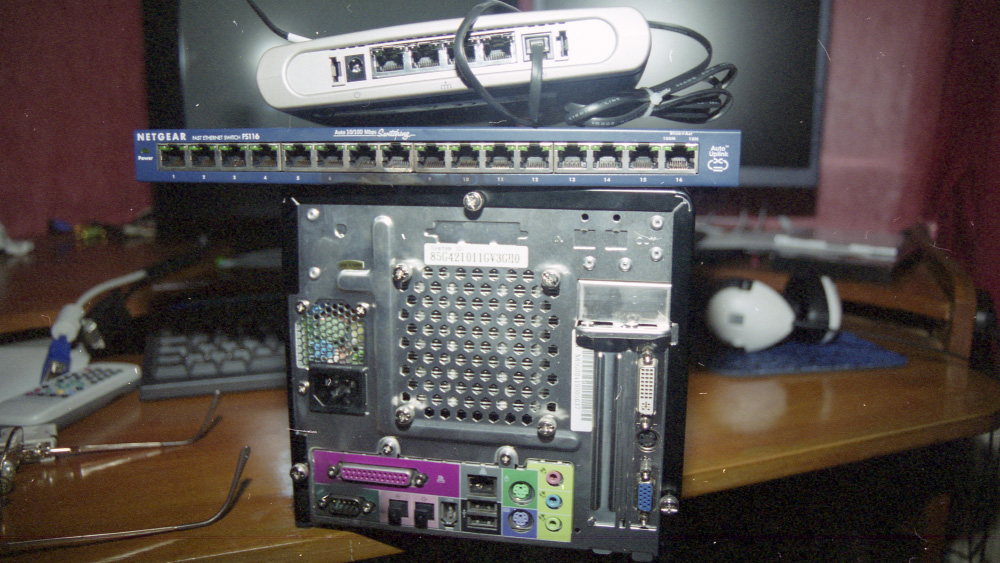
The antenna which was struck exploded and parts of its fibreglass casing were found over 100m away at the end of the road.
The Loft
The inside of our loft/workshop was lined with thick foil-based insulation and this helped to dissipate the energy across the roof. Inside the loft was a row of mains electrical sockets and several of these had burn marks from the screws which held them to the inside of the walls and across to the pins of the plugs which were connected at the time. This allowed the energy to get into the mains' electric circuits causing damage to all the other rooms in the house.
Most of the test equipment in the loft survived without any other damage unlike the rest of the house.
First Floor Damage
The computer and Icom radio was on the first floor and these were both destroyed along with the television, CD player, audio amp and Xbox console.
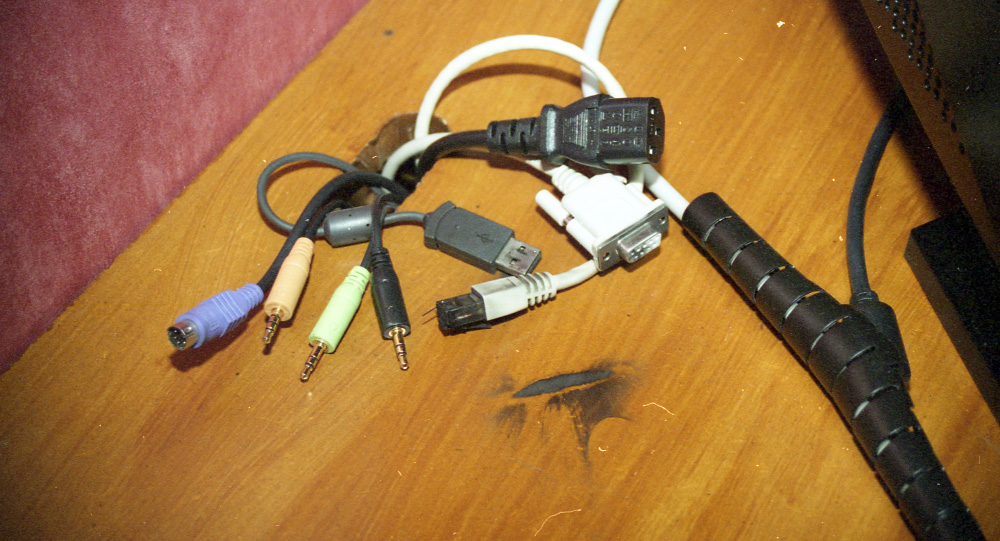
In the bathroom, we have a hot water cylinder and we found that the electric overload had blown a hole in the side of the tank via the immersion heater element causing a small water leak. We replaced this the same day as we were able to purchase one from local builders’ merchants.
Ground Floor Damage
On the ground floor where the mains electric and telephone service enter the building, we found that the telephone master socket was destroyed, and the mains electric fuse box was badly damaged and burnt.
The other computer connected to the network was dead with burn damage to the network port and the power supply cables. This also destroyed an Epson photo printer and the internet router was also burnt.
Both televisions on the ground floor no longer worked and the video, CD players and radios also had been damaged and wouldn’t work.
The washing machine and tumble dryer in the kitchen survived but the electric kettle on the same mains circuit had been damaged.
Electrical Damage and the repairs
We called our electricity supplier using a friend’s telephone and they said we did the correct thing by removing the master fuse at the time and that we should get an electrician to repair any damage and replace the fuse box.
As we had no electricity in the house and the gas central heating system required electricity to function, we needed to get power restored as soon as possible.
We spoke to several local electricians but all of them wouldn’t be able to start work for several weeks so we took the decision to do the repairs ourselves. My father was a plumber all his life and did electrical work, so we all knew how to wire the house correctly, a relative worked doing electrical testing and repairs, so he was able to help out where needed.
Once we removed the floorboards to access the mains cables, we found that nearly all of them had either melted or been damaged and it was very lucky that they had not caught fire to the surrounding wood beams and floorboards.
The smoke in the rooms directly after the strike was caused by the melted and burning plastic insulation from the wires under the floors and in the walls!
A new fuse box with modern RCD protection was purchased and several rolls of mains twin and earth cable and we started the task of rewiring the entire house. The last time the wiring had been changed must have been in the 1970s and a lot of the hardware was very brittle and fell apart easily so we replaced everything and added additional circuits for the loft and the sheds on their own fuses.
The work took around 6 weeks to complete overall and during the time the fuse box was missing, we had to power the central heating system, freezer and other appliances using extension leads connected to hanging sockets on temporary fuses.
Our home insurance sent one of their agents to see us a few days after the lightning strike and after we showed him the large pile of damaged equipment and the visible bits of the wiring which had burnt he approved the claim straight away and suggested taking photographs on film to keep in case of any problems.
We did have digital cameras at the time, but they were low resolution and we didn’t know if any of the previous photos we had on hard drives would still be available.
The Computers and Data
The computer which took the worst damage was the one connected to the Icom Radio. The serial port and network port had melted and there was a lot of charring internally but miraculously the hard drive still worked and had not lost any data.
The downstairs computer had a damaged motherboard, processor, memory and network card but the hard drive survived and after building a new computer, I was able to access the data.
Our first-generation Apple iMac died completely via the network port.
We had off-site backups of all our business and customers' data and so we used these to continue our web design business once the house repairs had been completed.
Our home network was also upgraded when the floorboards were up, and we ran all the cables to a central location in the house with a new 16-port network switch. This was later upgraded to a 48-port switch and the additional network cables were added a few years ago.

Comments